Archaeologists from the University of Cambridge, the Ephorate of the Cyclades and the Cyprus Institute have completed their four-year programme of excavations at the settlement adjoining the prehistoric sanctuary on Keros in the Cycladic Islands of Greece, the earliest maritime sanctuary in the world (2750-2240BC).
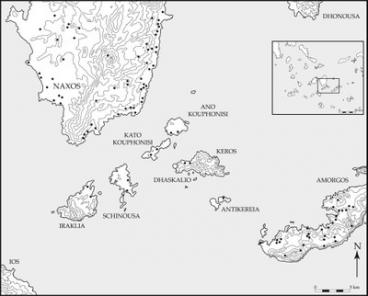
They have uncovered a series of impressive stairways, drainage systems and stone-built structures revealing a sophisticated urban architecture unprecedented for the period. The settlement, on what is now the small island of Dhaskalio, was originally linked by a narrow causeway with the nearby location at Kavos at the west of Keros, where remarkable quantities of broken marble sculptures and vessels, along with much broken pottery, had been ritually placed in two ‘Special Deposits’ over a period of some five hundred years.
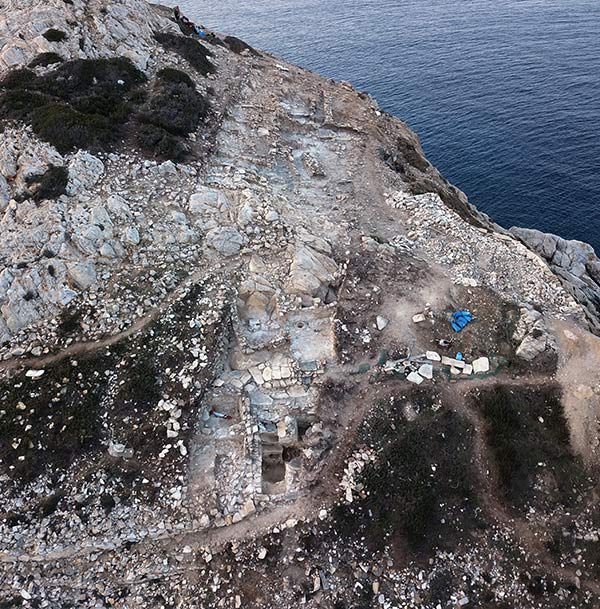
The finds from the 2018 excavations add greatly to our knowledge of the Dhaskalio settlement, which flourished during the Cycladic Early Bronze Age, as radiocarbon dates have confirmed.
Steep paths ascended to the summit, traversing massive platforms constructed to provide flat space for building. The intricate, interconnected and multi-level architecture gives a clear impression of a planned and well-built settlement, established on a steep promontory. The buildings on Dhaskalio were constructed mainly of good quality marble which had to be brought by sea from the island of Naxos, some ten kilometres to the north, since good quality marble is not available on Keros.
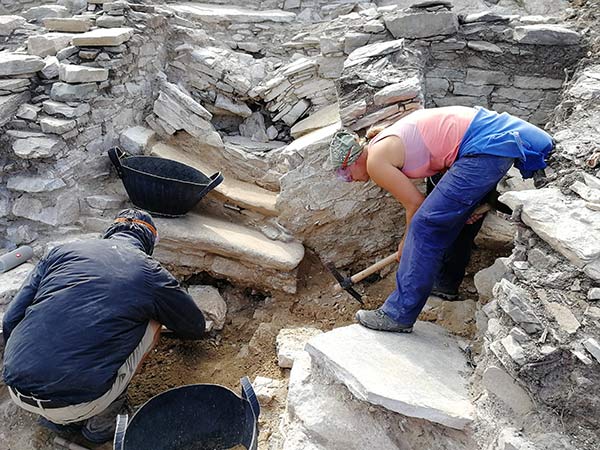
Professor Colin Renfrew of the University of Cambridge and co-director of the excavation, explains: “At Dhaskalio we see a number of sophisticated architectural techniques employed in a well-thought through manner. These include massive entranceways, stone-flagged stairways, and an intricate drainage system covering the entire island. This gives the clear impression of a skilled architect and a guiding hand planning and executing a building programme whose scope can only be compared with a site like Knossos on Crete.”

The import of marble from Naxos is only one indication of the seafaring abilities of the builders of Dhaskalio. Tools made from blades of obsidian, a volcanic glass imported from the Cycladic island of Melos, confirm that the islanders were accomplished sailors. Every single one of the 101,313 potsherds was imported from elsewhere, indicating a vast sea-going network spanning the entire Cycladic archipelago and beyond.
But, perhaps most notable of all the imported materials are the metals.
Amongst the most significant finds this year are installations for the casting of copper artefacts – axes, chisels and pins, as well as spearheads and daggers. Traces of copper slag found on potsherds in many parts of the site, confirm that metallurgical work was underway in many areas.

Dr Michael Boyd of the University of Cambridge and co-director of the excavation, notes that “One of the unique features of this site is the way that metalworking seems to be a feature from the very beginning until the end. It is one of the most identifiable activities on the site, practised almost everywhere we’ve dug. Metalworking on this scale presumes a constant supply of raw materials from the western Cyclades or Attica, and social structures that allowed for learning and maintaining esoteric technical skills.”
“But, most importantly, where was all the finished product going? It seems likely that part of the point of the seafaring networks centring on Dhaskalio was the circulation of finished metal products like daggers.”
Dr Evi Margaritis of the Cyprus Institute, lead researcher for the organic remains from Dhaskalio (and assistant director of the project), says “The island of Keros is itself not a good prospect for supporting a thriving site like Dhaskalio. All the evidence we are seeing is that much of the foodstuffs used on the site were imported to the site. This implies an agricultural hinterland stretching out to nearby islands and is further evidence of Dhaskalio’s position at the top of a networked hierarchy of sites.”


The Ministry of Culture and Sports announced the following:
-Dhaskalio was almost entirely covered with unique monumental buildings, built of stone imported from Naxos, giving the impression of a single grand monument rising out of the sea.
-Under an impressive staircase that came to light on the lower terraces, a sophisticated drainage system was discovered, which suggests a multifunctional architecture carefully designed in advance.
-Another aspect of Dhaskalio’s development can be found in the use of new farming practices for cultivating the olive and grape, while metalworking, the most important technology of the 3rd millennium BC, also played an important role. The inhabitants of Dhaskalio were proficient metalworkers, as clearly shown by clues found all over the site.
On the occasion of the impressive discoveries on Keros, the Athens and Macedonian News Agency (AMNA) spoke with co-director of the excavations at Dhaskalio Dr Michael Boyd of Cambridge University.
“The latest excavations show the nature of habitation on the Dhaskalio promontory. After the initial activities in the sanctuary, as shown by the ‘special depositors’ (i.e. the deposits of broken marble figurines and vases found in the Kavos sanctuary on Keros dating from 2700 to 2400 BC), an extensive building programme took place at Dhaskalio, which changed the natural rocky outcrop into something that resembled a human construction” said Dr Boyd to the Athens and Macedonian News Agency, pointing out the complexity of the relations and activities that were developed: “Within the walls that were built, activities, knowledge and expertise evolved that have to do with rare or exotic materials such as metals and obsidian, while the people who lived there seem to have been involved in different networks operating at different levels. Dhaskalio became a proto-urban centre such as never seen before in the islands, competing only with Knossos on Crete.”
To what period however does this brilliant construction programme date? “At the moment it seems that construction at Dhaskalio starts a little after the ritual activities at Kavos, perhaps around 2600 BC” says Dr Boyd to the AMNA, noting however that “one of the primary aims of research the following summer will be to find evidence of earlier activity at Dhaskalio, consequently this answer might change.”
“How do you think things evolved on Keros? Why did you speak about the beginnings of urbanization?” the AMNA asks Dr Boyd: “At first, the ritual activities in the sanctuary were the focus on Keros. But this gradually led to the concentration of other types of activities, with increasing technical know-how and raw materials being centred at the west end of the island. The forms of interaction that inevitably took place among the people during the ceremonies ‘sowed’ the seeds for the strengthening or creation of new networks centred on Keros. This gathering of people and materials is the reason we refer to proto-urbanization,” he explains.
As to whether we have something comparable in other areas, he replies that “the most obvious parallel is Knossos on Crete, where similar influences occurred, at least after the end of the 4th millennium; i.e. the gathering of large groups for rituals and the concentration of people and resources.”
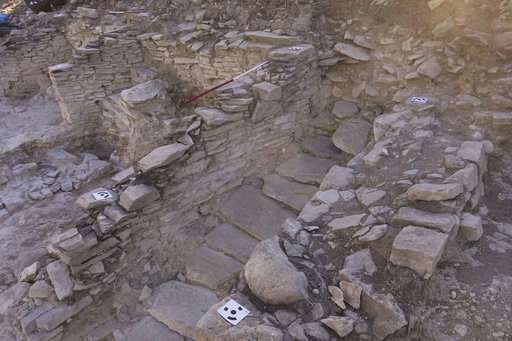
(Source: https://www.archaeology.wiki/blog/2018/01/30/michael-boyd-talks-about-the-finds-at-dhaskalio/)
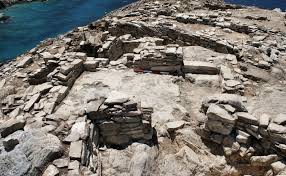
Metal melting and casting was common practice in the islanders’ society, and the archaeology team found two workshops during their excavation. In one, filled with debris and other objects, they uncovered a lead axe, copper dagger molds, and dozens of copper-coated ceramic fragments, including a piece that would have been part of a pair of bellows.
The discovery of metalworking and engineering shows this society was particularly complex. Researchers have known metalworking was popular around the third millennia BC, but this society’s innovative technology was most likely unique to its people.
With its dense population and plentiful imported resources, the island would have been an important, central location for Cycladic islanders.
“It just gives this impression of being a very cosmopolitan and international place,” Boyd says.
But, Boyd says, one question remains unanswered.
“What was really going on in the earliest period of the sanctuary?”
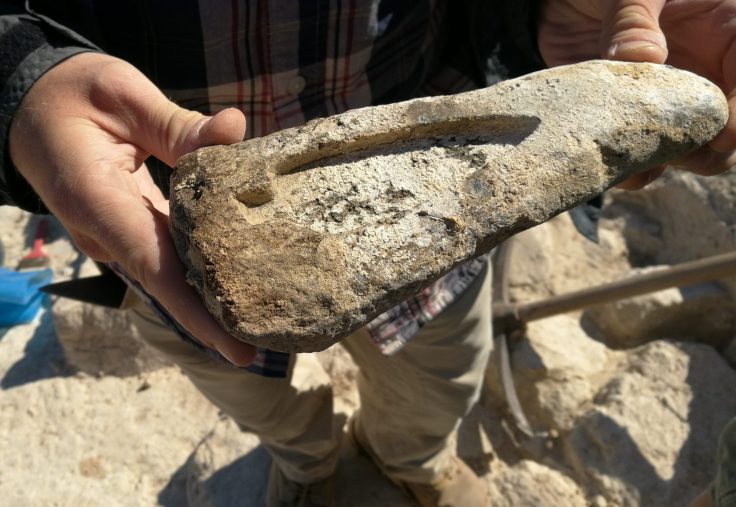
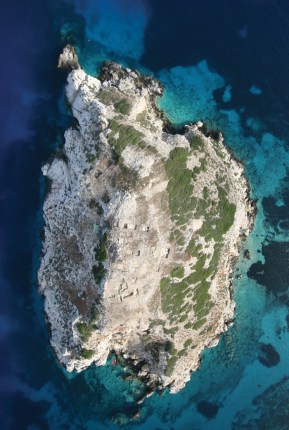
The ministry said prehistoric builders created massive terrace walls that made the 1.3-hectare (3.21-acre) Dhaskalio look like a stepped pyramid.
“Almost every possible space on (Dhaskalio) was built on, giving the impression of a single large monument jutting out of the sea,” the statement said, adding that the complex is the largest known at the time in the Cyclades island complex, which includes the top tourist destinations of Mykonos and Santorini.
More than 1,000 tons of marble were painstakingly shipped over from Naxos for the work.
Project co-director Michael Boyd of Cambridge University told The Associated Press that Dhaskalio appears to have been more than just an ordinary settlement.
“It seems to us that it is a central place to which people are drawn, to which expertise and resources are being brought and where activities like the metalworking … are being centralized and controlled,” he said.
Oddly, more than half the surviving Cycladic figurines have been found on desolate Keros. Excavators think they were brought from across the archipelago and ritually smashed on the islet, home at the time to about half a dozen tiny settlements, at a sanctuary just opposite Dhaskalio.
Boyd said that while there’s no answer to why Keros was initially chosen, the rituals were the first draw that brought everything else.
“All these other activities that we’re talking about now (came) to be as important or eventually more important than the ritual activities,” he said, adding that in early societies where only a few controlled the knowledge of metalworking, to others it would seem an almost supernatural skill.
“It involves fire, extreme heat, danger, and toxic fumes,” he said. “It would have been quite a spectacle for people to watch so it does probably make sense that some of the smelting processes that we see on Keros were part of the … public events that took place there.”

(Source: https://phys.org/news/2018-01-excavations-remote-greek-islet-early.html)

According to a press release, archaeologists have studied Keros for years with serious work beginning in the 1960s. Besides the terraces, the island is also covered in broken marble statues likely buried during rituals by religious pilgrims. Recent excavations at the pyramid have also revealed a sophisticated system of drainage pipes in the lower levels, showing that the builders carefully planned their monument. It also indicates they were dealing with runoff and sewage an estimated 1,000 years before the Minoans, who built Europe’s first drainage system and flush toilets at the Palace of Knossos on Crete. Recent excavations show that Dhaskalio was full of monumental constructions made from the same gleaming white stone from Naxos and that its inhabitants were as advanced as the shrine they constructed.
The Keros has very few resources and farming is not possible in the rocky landscape. Elaina Zachos at National Geographic reports that food and every other resource must have been imported to the community at the base of the monument. As pilgrims came to the site, the village grew into a sophisticated urban center. The two metal workshops in particular point to this. The researchers found a lead ax, a mold for making copper daggers and fragments of a bellows in one shop. In the other a clay oven was found which will be investigated later this year.
Excavation co-director Michael Boyd of the University of Cambridge says the skills of the Dhaskalio metal smiths was probably unique in the region. “At a time when access to raw materials and skills was very limited, metalworking expertise seems to have been very much concentrated at Dhaskalio,” he says in the press release. “What we are seeing here with the metalworking and in other ways is the beginnings of urbanization: centralization, meaning the drawing of far-flung communities into networks centered on the site, intensification in craft or agricultural production, aggrandizement in architecture, and the gradual subsuming of the ritual aspects of the sanctuary within the operation of the site. This gives us a clear insight into social change at Dhaskalio, from the earlier days where activities were centered on ritual practices in the sanctuary to the growing power of Dhaskalio itself in its middle years.”
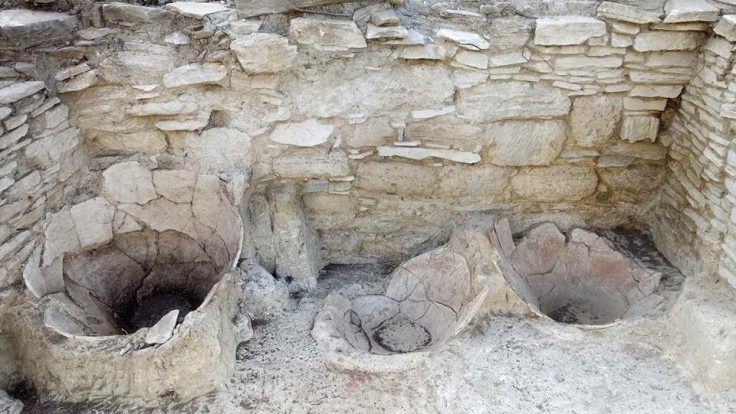
Relative Bibliography:
1. Title: Keros, Dhaskalio Kavos: The Investigations of 1987-88
Authors: Renfrew, C. & Doumas, Chr.G. & Marangou, L. & Gavalas, G.
Publisher: McDonald Institute for Archaeological Research. University of Cambridge
2. Title: The settlement at Dhaskalio (The sanctuary on Keros and the origins of Aegean ritual practice: the excavations of 2006–2008. Volume I)
Authors: Colin Renfrew, Olga Philaniotou, Neil Brodie, Giorgos Gavalas & Michael J. Boyd
Publisher: McDonald Institute for Archaeological Research
3. Title: Kavos and the Special Deposits. The Sanctuary on Keros and the Origins of Aegean Ritual Practice: the Excavations of 2006–2008 (Volume II)
Authors: Colin Renfrew, Olga Philaniotou, Neil Brodie, Giorgos Gavalas & Michael J. Boyd
Publisher: McDonald Institute for Archaeological Research
4. Title: The Marble Finds from Kavos and the Archaeology of Ritual. The sanctuary on Keros and the origins of Aegean ritual practice: the Excavations of 2006–2008 (Volume III)
Authors: Colin Renfrew, Olga Philaniotou, Neil Brodie, Giorgos Gavalas & Michael J. Boyd
Publisher: McDonald Institute for Archaeological Research
5. Title: The Pottery from Dhaskalio: The Sanctuary on Keros and the Origins of Aegean Ritual Practice: the Excavations of 2006–2008 (Volume IV)
Authors: Peggy Sotirakopoulou, Colin Renfrew
Publisher: McDonald Institute for Archaeological Research

Research-Selection for NovoScriptorium: Philaretus Homerides

Leave a comment